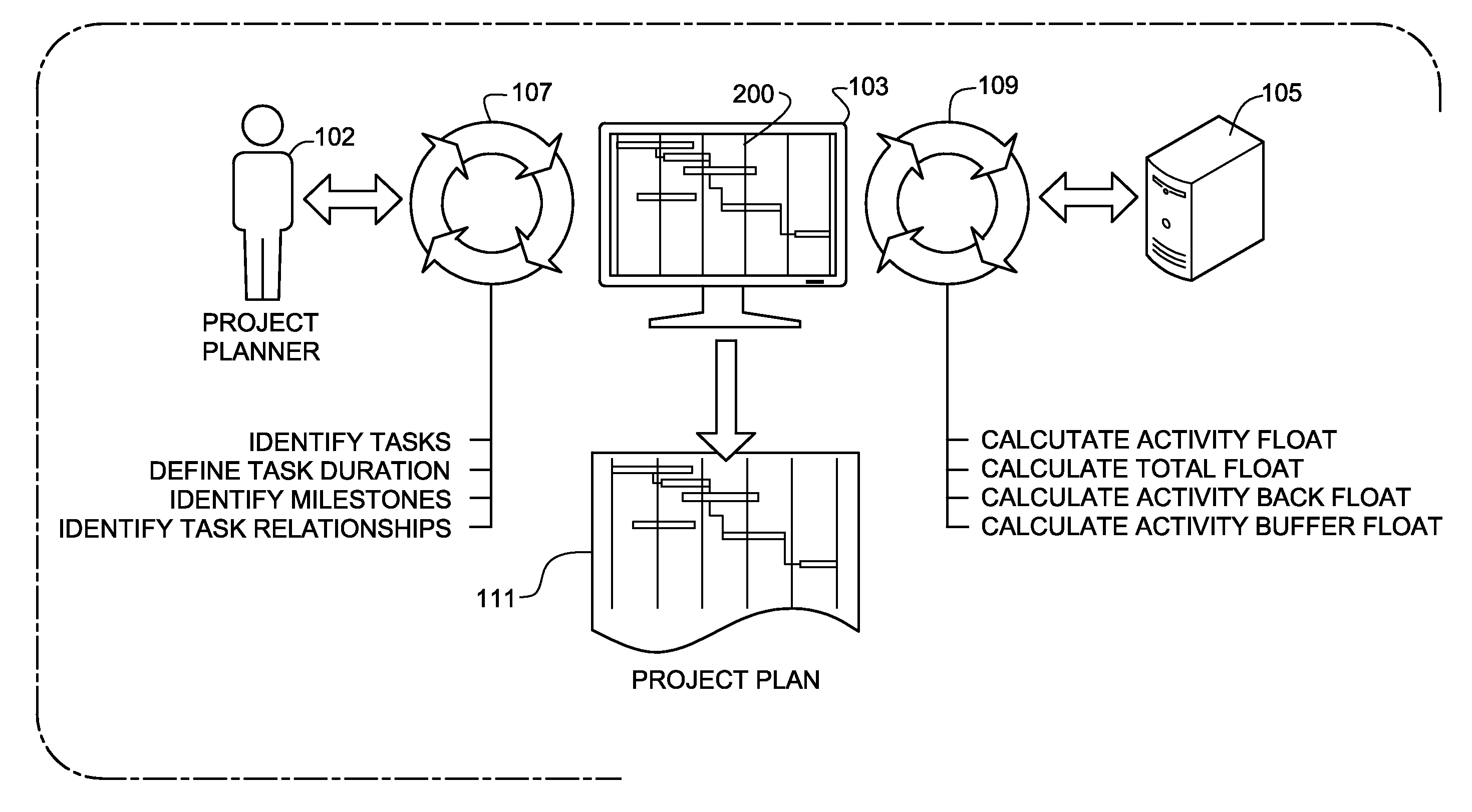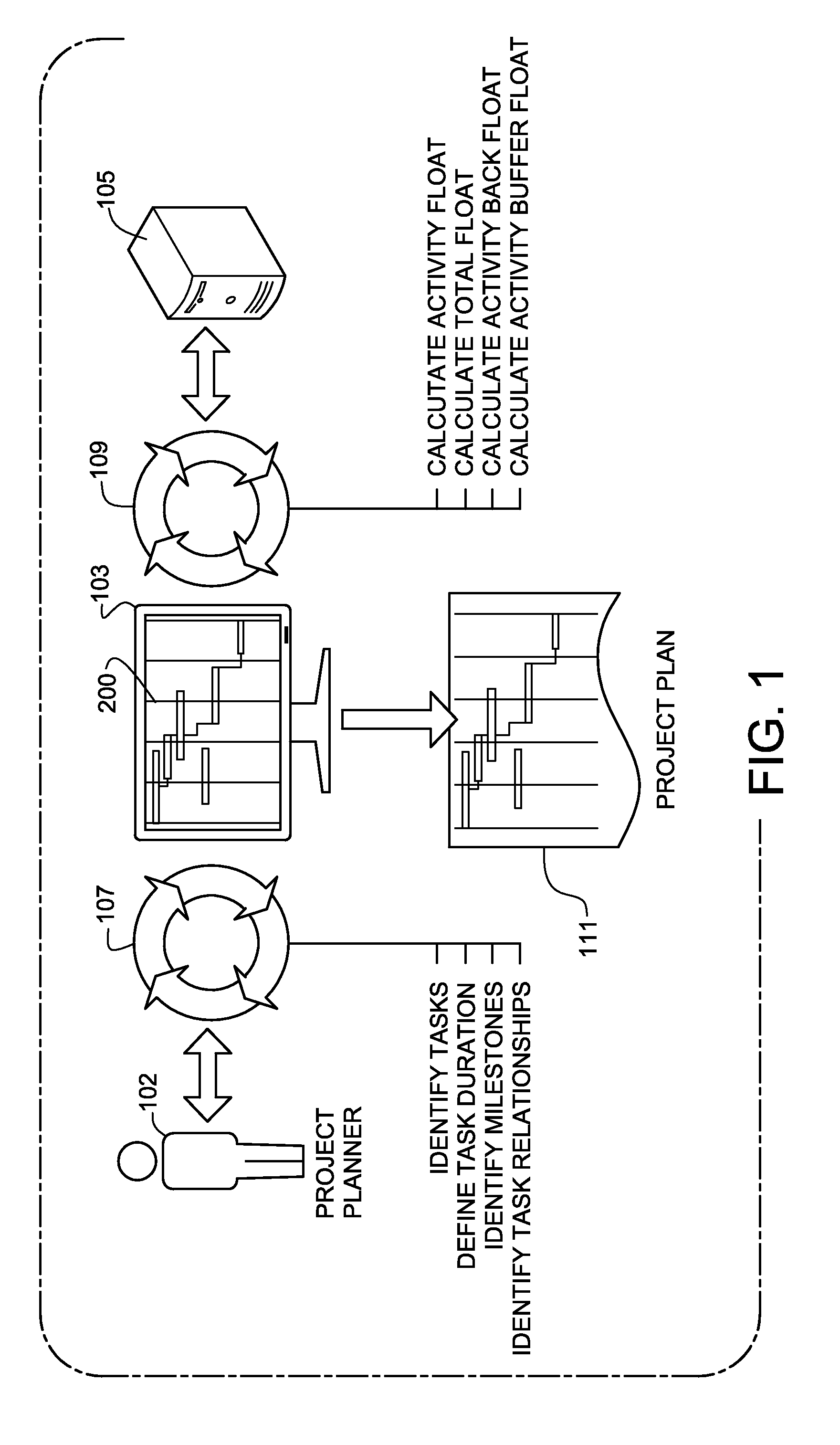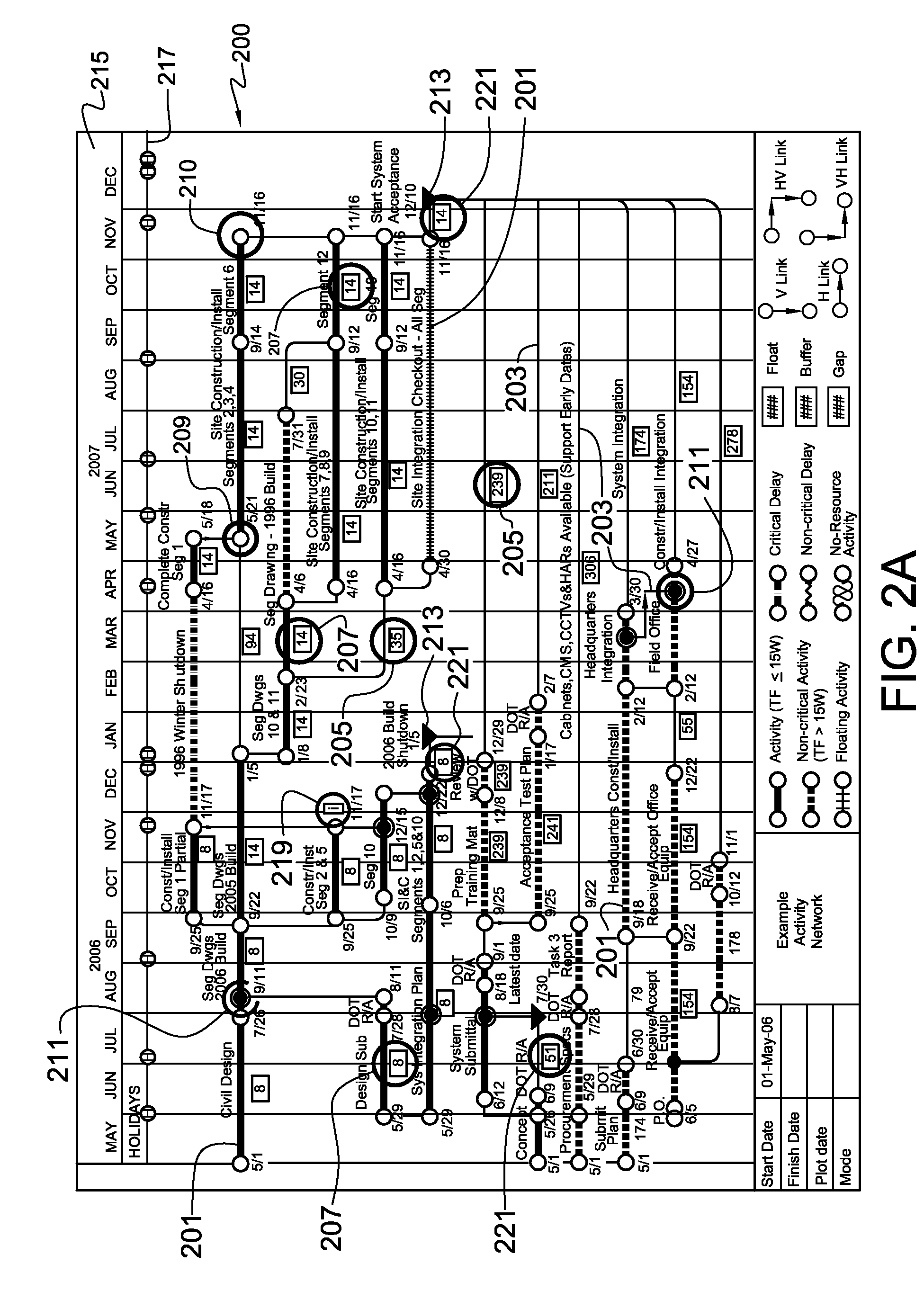Interactive graphics-based planning systems
- Summary
- Abstract
- Description
- Claims
- Application Information
AI Technical Summary
Benefits of technology
Problems solved by technology
Method used
Image
Examples
Embodiment Construction
[0136]Referring to FIG. 1, a summary diagram illustrating the interactive planning and scheduling method provided by Interactive Graphics-Based Planning System 100 according to a preferred embodiment of the present invention, and referring to FIG. 2A, FIG. 2B, and FIG. 2C, a sample project schedule created through the use of the interactive planning and scheduling method provided by the Interactive Graphics-Based Planning System 100 according to a preferred embodiment of the present invention: Interactive Graphics-Based Planning System 100 was developed to make planning and scheduling an intuitive process for the user. The system is preferably designed to suit itself to a users' own heuristics and thought process developed through years of collective experience (which is not contingent on experience with conventional network-based planning and scheduling).
[0137]Graphics-Based Planning System 100 preferably relies on graphics technology where the visual display of diagramming objects...
PUM
 Login to View More
Login to View More Abstract
Description
Claims
Application Information
 Login to View More
Login to View More - R&D
- Intellectual Property
- Life Sciences
- Materials
- Tech Scout
- Unparalleled Data Quality
- Higher Quality Content
- 60% Fewer Hallucinations
Browse by: Latest US Patents, China's latest patents, Technical Efficacy Thesaurus, Application Domain, Technology Topic, Popular Technical Reports.
© 2025 PatSnap. All rights reserved.Legal|Privacy policy|Modern Slavery Act Transparency Statement|Sitemap|About US| Contact US: help@patsnap.com



